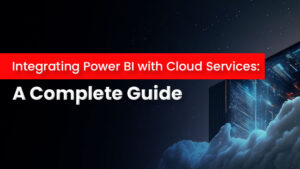
3 Ways Microsoft Sentinel Boosts Your SOC’s Efficiency
Introduction We live in an age where companies worldwide are confronted with cyber threats daily; therefore, the security operations center (SOC) is vital. However, since
Limited Time Offer! Upgrade Your Skills with the Latest Tech Courses – Premium Annual Plan for Only $160 $99 – Use Code: “PREMIUM99”

Introduction We live in an age where companies worldwide are confronted with cyber threats daily; therefore, the security operations center (SOC) is vital. However, since

Introduction In today’s digital age, cyber threats are a significant concern for individuals, businesses, and governments alike. Cyberattacks can cost organizations millions and erode trust

Introduction In today’s data-driven business environment, leveraging real-time insights and advanced analytics is crucial for maintaining a competitive edge. Power BI, Microsoft’s leading data visualization
Table of Contents
Software solutions and technologies for application security are made to find and reduce threats and vulnerabilities in software applications. Their primary objective is to shield applications from harmful assaults, unauthorized access, and data breaches.
These tools are essential for maintaining sensitive data’s security, integrity, and confidentiality, including financial records and personal information. Organizations can lower the risk of exploitation and mitigate the impact of security incidents by proactively detecting and repairing potential security issues. This article covers detailed knowledge of Application Security Tools & Software.
Check Out Our Cybersecurity Courses Now!
As the digital landscape evolves, so do the threats that target applications. Cybercriminals continually devise new strategies to exploit vulnerabilities, compromising data, privacy, and business operations. This makes application security a paramount concern for individuals, businesses, and organizations.
Below are the Application Security Tools and Software:
GitGuardian, founded in 2017, specializes in protecting sensitive data and trade secrets kept in source code repositories. It is an expert in identifying and avoiding the disclosure of API keys, credentials, certificates, and other private information. It provides real-time scanning, connections to well-known version control platforms like GitHub and GitLab, and alarms for possible security lapses involving sensitive data in code.
Static, dynamic, and software composition analysis are all provided by Veracode, a thorough application security solution. It provides many security testing features, such as code scanning and vulnerability evaluation. Veracode offers comprehensive reports on security flaws and application shortcomings and supports over a hundred programming languages.
GitLab has built-in application security measures and is mainly known as a version control system and DevOps platform. GitLab enables continuous security monitoring and mitigation by integrating security testing into the development workflow.
Qualys is a cloud-based security platform that provides comprehensive security and compliance solutions, including application security. It also includes tools for online application scanning and vulnerability management. It provides online application scanning and assessment to find vulnerabilities and potential security problems, as well as detailed reporting and repair. Qualys’ security coverage is as extensive as possible and may be more than certain enterprises require.
While application security tools are crucial, they are not a one-size-fits-all solution. Challenges in application security include:
Before purchasing an application security product, it is critical to prioritize your organization’s particular requirements and do a comprehensive search. Prospective purchasers should consider features and capabilities, supported programming languages, compatibility with current infrastructure, scalability, ease of usage, cost, and the degree and quality of technical support given. Including critical stakeholders in the decision-making process, such as IT security teams and developers, is also critical.
© 2024 All rights reserved | Privacy Policy | Terms and Conditions | Sitemap | Cookie Policy




